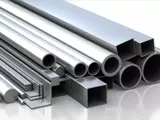Welding is one of the most common ways of joining metals together in the modern world. It is estimated that welding accounts for around one third of all manufacturing in the developed nations. This article aims to discuss the fundamentals of welding structures.
Welding is a process of using heat to permanently join two or more pieces of metal together. This is done by melting the metals just enough to fuse them together to form one solid piece. It is important to note that welding is not just a process of joining two pieces of metal, but instead the welded joint must be strong enough to withstand the forces exerted against it (weight, temperature, pressure, etc).
The main types of welding are: arc welding, MIG welding and TIG welding. Arc welding, also known as shielded metal arc welding (SMAW), involves the use of a welding arc created between an electrode and a workpiece. This welding process is usually used for joining ferrous and non-ferrous metals. MIG welding, also known as metal inert gas welding, uses an electric arc and a steady flow of inert gas to join materials together. TIG welding, also known as tungsten inert gas welding, uses a non-consumable tungsten electrode to create an electric arc. This welding process is used primarily to join thin workpieces together, but can also be used to join thicker material.
When designing a welded structure, there are several factors that need to be taken into account. This includes the type of material, weld size and shape, weld direction, welding process and power setting. It is important to use the right type of welding process for the job at hand. In addition, the joint design needs to be carefully considered to ensure that the welded joint is strong enough for the application.
When welding, the joint must be clean and free of dirt and grease before welding can begin. Residual material can weaken the weld joint, leading to failure. In addition, the workpiece needs to be properly positioned and supported. This ensures that welds are of a uniform depth and strength.
Finally, the welders must be skilled and experienced professionals who are familiar with the process. In addition to knowledge of the proper welding processes and techniques, the welders must also be aware of the hazards associated with welding and take the necessary safety measures to ensure the safety of themselves and others in the workplace.
The benefits of welding are numerous. Welding provides a strong and durable bond between two or more pieces of metal, and can be used in a variety of applications such as bridges, ships, buildings, vehicles, and more. It is important to be familiar with the proper welding procedures and safety precautions, so that the final welded product is strong and reliable. Welding is an important and vital process in the fabrication of many structures and components today.






